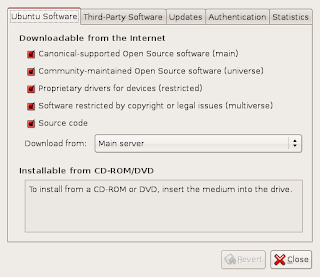We can not say no when Microsoft Windows Vista released, it was something. Vista offers animated desktop which were able to run smoothly and well since Vista required higher resources such as processor, RAM, Harddisk and display card.
It seemed that Linuxers do not want to be left behind in animating the desktop. Even more that that, Linux can also looked like Mac OS X Leopard (read on mac4lin_make_linux_look_like_a_mac).
To make my desktop looks like Vista, I used compiz and kiba-dock, and i would like to share how did i do that.
- go to Applications - Add/Remove
- search : compiz show : all available applications
- check on Advanced Desktop Effects Settings
- click apply and wait until it's finished and then close it
- go to System - Preferences - Advanced Desktop Effects Settings -- to set the compiz
- go to Application - Accesories - Terminal
- type : sudo gedit /etc/apt/source.list
- go to the end of file and add these two lines
- deb http://download.tuxfamily.org/3v1deb feisty eyecandy
- deb-src http://download.tuxfamily.org/3v1deb feisty eyecandy
- save it and close it ( file - save and file - quit )
- type : wget http://download.tuxfamily.org/3v1deb/DD800CD9.gpg -O- | sudo apt-key add -
- sudo apt-get update
- sudo apt-get install kiba-dock
- sudo apt-get install kiba-plugins
- sudo apt-get install kiba-dock-dev
- go to Applications - Accessories - kiba-setting to set kiba-dock
- go to Applications - Accessories - kiba-dock to activate it
If you want to load compiz and kiba-dock during start-up, then you have to put them in the session
- go to System - Preferences - Sessions
- click Add button
- name : compiz (adjustable)
- command : compiz
- comment : (up to you)
- click OK button
- click Add button again
- name : kiba-dock (adjustable)
- command : kiba-dock
- comment : (up to you)
- Click OK button
- you will see both of them in the session and checked
Addition :
If you do not want to use kiba-dock, you can use Avant Window Navigator, for getting AWN, you should go to http://download.tuxfamily.org/syzygy42/pool/gutsy/avant-window-navigator/ then, you have to download and execute below files sequentially;
- libawn-bzr
- phyton-libawn-bzr
- awn-core-applets-bzr
- avant-window-navigator-bzr
Happy docking !!
~E~







